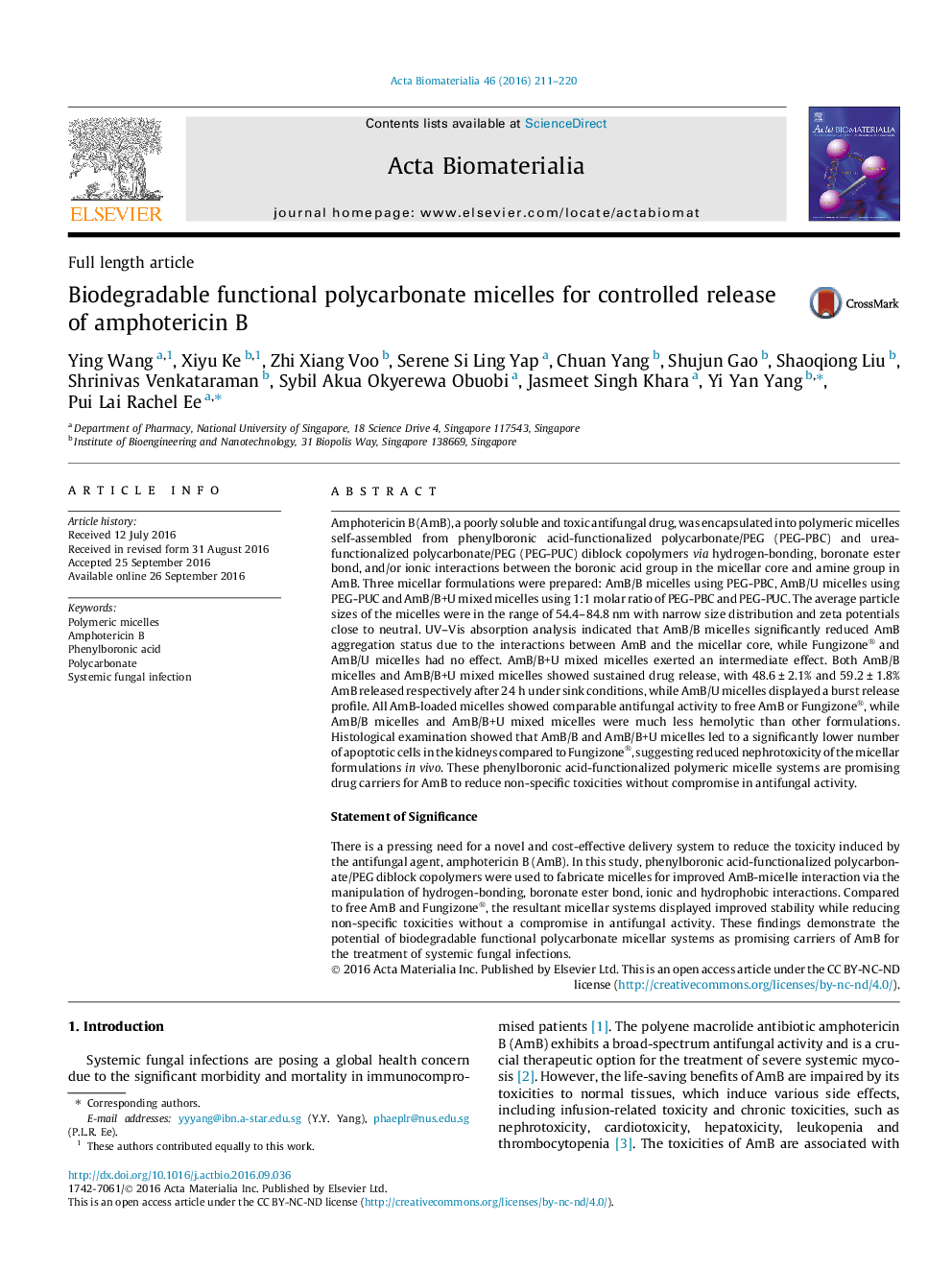| Article ID | Journal | Published Year | Pages | File Type |
|---|---|---|---|---|
| 6450158 | Acta Biomaterialia | 2016 | 10 Pages |
Amphotericin B (AmB), a poorly soluble and toxic antifungal drug, was encapsulated into polymeric micelles self-assembled from phenylboronic acid-functionalized polycarbonate/PEG (PEG-PBC) and urea-functionalized polycarbonate/PEG (PEG-PUC) diblock copolymers via hydrogen-bonding, boronate ester bond, and/or ionic interactions between the boronic acid group in the micellar core and amine group in AmB. Three micellar formulations were prepared: AmB/B micelles using PEG-PBC, AmB/U micelles using PEG-PUC and AmB/B+U mixed micelles using 1:1 molar ratio of PEG-PBC and PEG-PUC. The average particle sizes of the micelles were in the range of 54.4-84.8 nm with narrow size distribution and zeta potentials close to neutral. UV-Vis absorption analysis indicated that AmB/B micelles significantly reduced AmB aggregation status due to the interactions between AmB and the micellar core, while Fungizone® and AmB/U micelles had no effect. AmB/B+U mixed micelles exerted an intermediate effect. Both AmB/B micelles and AmB/B+U mixed micelles showed sustained drug release, with 48.6 ± 2.1% and 59.2 ± 1.8% AmB released respectively after 24 h under sink conditions, while AmB/U micelles displayed a burst release profile. All AmB-loaded micelles showed comparable antifungal activity to free AmB or Fungizone®, while AmB/B micelles and AmB/B+U mixed micelles were much less hemolytic than other formulations. Histological examination showed that AmB/B and AmB/B+U micelles led to a significantly lower number of apoptotic cells in the kidneys compared to Fungizone®, suggesting reduced nephrotoxicity of the micellar formulations in vivo. These phenylboronic acid-functionalized polymeric micelle systems are promising drug carriers for AmB to reduce non-specific toxicities without compromise in antifungal activity.Statement of SignificanceThere is a pressing need for a novel and cost-effective delivery system to reduce the toxicity induced by the antifungal agent, amphotericin B (AmB). In this study, phenylboronic acid-functionalized polycarbonate/PEG diblock copolymers were used to fabricate micelles for improved AmB-micelle interaction via the manipulation of hydrogen-bonding, boronate ester bond, ionic and hydrophobic interactions. Compared to free AmB and Fungizone®, the resultant micellar systems displayed improved stability while reducing non-specific toxicities without a compromise in antifungal activity. These findings demonstrate the potential of biodegradable functional polycarbonate micellar systems as promising carriers of AmB for the treatment of systemic fungal infections.
Graphical abstractDownload high-res image (219KB)Download full-size image
